-
These Signs Mean Your Transmission Needs Repairs
A working transmission is vital for any vehicle. While you can expect your transmission to remain in good shape for thousands of miles down the road, there may come a time when you need to bring your car in to the transmission shop for service. By paying attention to the signs of transmission problems, you will know when you need to visit your transmission specialist in Silver Spring for a transmission tune up. Let’s review three sure signs that your transmission needs attention from a qualified mechanic.
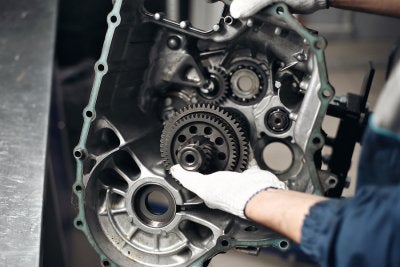
Random Gear Changes
When an automatic transmission is functioning properly, it will move smoothly through its entire range of gears. A sign of transmission problems is when your transmission seems to randomly slip in and out of gear, especially when you are travelling at a steady speed. Your transmission repair professional will be able to adjust your transmission’s gears and fix any other repair problems that may be causing it to shift.
Thudding Sensations
If your transmission needs significant repairs, it may start to make a thudding sound as it shifts between gears. This sound is the result of your vehicle’s gears failing to engage smoothly or responsively. While these thudding sensations can be irritating, they may also be a sign of a significant repair problem in your vehicle. After you have had your vehicle serviced by a qualified transmission mechanic, your car should drive smoothly and soundlessly.
Failure to Engage
A properly functioning transmission will shift into gear right away after you move your stick shift from the park to the drive position. One sure indicator that your transmission is in need of repairs is when it fails to engage after you have shifted your vehicle out of park. If it takes a few seconds for your transmission to shift into gear, you may have a mechanical or electrical problem on your hands. With computer diagnostic technology, your transmission repair technician can easily identify what is going wrong with your transmission.
-
Driving Habits That Can Destroy Your Transmission
When you first learn to drive, you will be taught driving habits that will help to keep transmission problems at bay. Over the course of many years of driving, however, it can become tempting to take shortcuts behind the wheel. When you bring your car in for transmission repair in Bethesda, your transmission specialist in Bethesda, MD can answer your questions about which driving techniques may be harming your transmission. To help you prevent transmission issues, read on to look at some driving habits that can destroy your transmission.
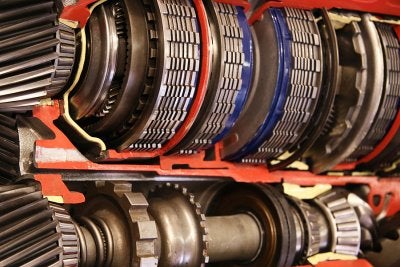
Neglecting the Parking Brake
While drivers of manual transmissions nearly always use their parking breaks, many drivers with automatic cars often neglect this essential device. When you engage your parking brake after parking your car, you will help to take pressure off of your vehicle’s output shaft. In the event that your car shifts slightly while it is parked, the parking brake will help to prevent the transmission from becoming seriously damaged.
Shifting Before Your Car Has Stopped
Your automatic transmission needs to come to a full stop before you move the shift selector from one of the drive functions into park. If you switch between reverse, park, and drive too quickly, you run the risk of grinding your gears and causing serious damage to your car’s transmission. To protect your transmission from harm, get in the habit of slowing down your shifts and waiting for your car to come to a complete stop, before you select a new drive mode.
Using Downshifting to Slow Your Vehicle
If you grew up driving manual transmission vehicles, you may have learned about the technique of downshifting to slow down on a hill. While downshifting can be a helpful technique when you drive a manual transmission vehicle, this practice might cause devastating damage to your automatic transmission. Rather than forcing your automatic transmission into a slower gear to reduce your speed of travel, you can safely slow down by gently tapping on the brakes.
-
Stopping Easily with a Manual Transmission
When you drive a car that contains a manual transmission , you will have complete control over your vehicle’s shifting in gears. This video from Vehicle Virginia explains how to easily stop your manual car. To stop easily, you can either downshift match your revolutions or coast in neutral. If you are experiencing transmission problems in Rockville, your transmission mechanic can restore your manual transmission to peak condition.
In order to make sure that your transmission problems are fixed correctly, always bring your car to a shop that specializes in auto transmission repair. By bringing your car to a team of expert mechanics, you will have the peace of mind that comes from knowing that your transmission is ready for all of your driving adventures.
-
The Role of Your Car’s Transmission
The transmission is among the most critical components of any vehicle. Whether you drive a car that contains a manual or automatic transmission, your transmission is designed to transfer power from the engine to the wheels. By matching the output of the engine to changing driving conditions, the transmission also prevents your vehicle from stalling out on the road. Using CV joints, a transmission is able to send the power that is created by the generator directly to the drive wheels of the car. A transmission shop in Silver Spring can help to keep your transmission up and running for many miles down the road.
When you start to notice that your car has a slipping transmission, it may be time to visit your transmission specialist. Using specific tools and equipment, your team of transmission service experts will be able to fully repair the sophisticated components that are located within your car’s transmission system.

-
Do You Make These Common Car Owner Mistakes?
To avoid the need for major transmission repair and other maintenance procedures, it is important to avoid some common driving mistakes. When you watch this video, you will learn about some typical car owners’ mistakes that could be hurting the quality and condition of your vehicle. By taking the time to warm up your car and using the correct grade of gasoline, you can keep your vehicle in terrific driving condition. A company that offers transmission repair near Silver Spring can help your car last for many miles on the road.
If you need quality transmission services, bring your vehicle to a shop that specializes in transmission repair. A transmission specialist will know how to diagnose issues in your car’s transmission system, and he can also advise you about any driving habits that may be causing premature wear and tear to your transmission.
-
Should You Repair or Replace Your Transmission?
A broken transmission can leave you with a major decision on your hands. In order to fix your transmission problems, you may have to choose between repairing the damage and scheduling a full transmission replacement. By consulting with a transmission specialist in Silver Spring, you will receive essential information that can help you make the smartest choice for your transmission repairs. While some transmission problems can be fixed, others may require a full replacement of your system.
There are a few factors to keep in mind when you are choosing between transmission repair and replacement. If your transmission is only suffering from a minor malfunction, a repair may be all that you need to get your car back up and running again. Major transmission problems, such as cracked pans or broken gears, may require a full transmission replacement. Before you decide between repairing or replacing your transmission, it is a terrific idea to get a cost estimate from your technician.
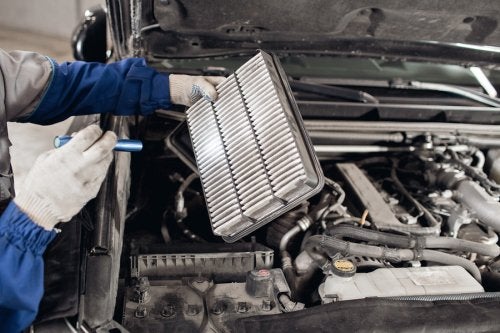
-
Signs That You Need to Replace Your Manual Transmission
If you drive a high mileage car that is equipped with a manual transmission, you will need to be on the lookout for signs that your vehicle needs a transmission replacement. When manual transmissions wear out, they can put older cars out of commission. A transmission shop that offers rebuilt transmissions in Bethesda can help you determine when it is time to put a new manual transmission in your car. Here is a look at some of the most common signs that your manual transmission is in need of replacement.
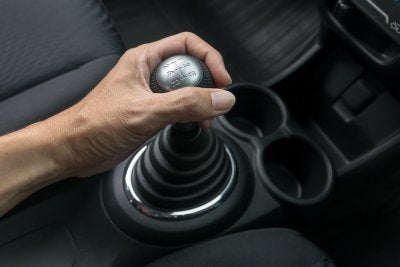
Slipping Clutch
As you shift between gears in a manual transmission, you will need to use the clutch to engage and disengage the flywheel. If your clutch starts to slip, you may notice that your engine revs but does not allow you to easily transition between various gears. With a full clutch replacement, you may be able to avoid replacing your entire manual transmission. Typically, you can expect to install a new clutch about once every 100,000 miles.
Difficulty Shifting
When your manual transmission is functioning properly, it will allow you to easily slide between all of its various gears. An extremely sticky shifter could indicate that your manual transmission needs to be rebuilt or replaced. In many cases, shifting problems are caused by gears that are extremely damaged. Replacing your transmission’s gears and other major components can help you keep your high mileage car out on the road for longer.
Leaky Fluid
A transmission fluid leak may also indicate that your manual transmission needs to be replaced. If your manual transmission has sprung a fluid leak, you may start to notice pools of bright red fluid forming on the pavement where you typically park your car. Without a steady supply of transmission fluid, your vehicle’s gears and clutch will not be able to operate correctly. For answers to your questions about knowing when to replace your manual transmission, be sure to contact your local transmission repair shop.
-
Your Guide to Automatic Transmission Pans
Your automatic transmission relies on a steady supply of transmission fluid in order to operate smoothly and efficiently. Since many different transmission problems can be caused by low or leaky transmission fluid, it is important to schedule transmission fluid change procedures at regular intervals. During a transmission fluid change at your local transmission shop in Rockville, your technician will typically inspect the condition of your transmission pan. To help you keep your transmission in peak running condition, here is a look at what you need to know about automatic transmission pans.
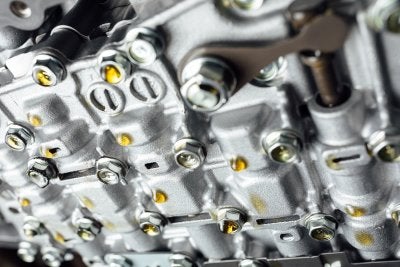
Role of the Automatic Transmission Pan
Automatic transmission pans play a vital role in the overall function of a car’s transmission system. The primary job of the transmission pan is to house all of the transmission fluid that is needed to power the vehicle. Along with providing storage for transmission fluid, transmission pans are also responsible for protecting the transmission fluid from foreign contaminants and ensuring that the fluid is properly cooled before it is sent through the system.
Capacity of the Automatic Transmission Pan
Your car’s automatic transmission pan is not designed to hold its full capacity of transmission fluid. Instead, the pan will have enough space to contain up to half of a car’s total transmission fluid. The other portion of the transmission fluid should always remain in your transmission system and torque converter. If your transmission pan is completely empty, you may be experiencing a transmission fluid leak.
Problems Associated with the Automatic Transmission Pan
There are a few common transmission repair issues that can be linked to a faulty or improperly maintained transmission pan. If you drive over rough or bumpy terrain, your transmission pan could get knocked or pierced by road debris. In the event that your pan moves out of position, it could cause a significant transmission fluid leak. To fix your transmission pan issues and restore your vehicle to safe driving condition, you should always bring your car to a certified transmission center for repairs.
-
Troubleshooting for Manual Transmissions
While automatic transmissions have become the standard for most new cars, many drivers still prefer their manual transmission vehicles. In order to avoid common manual transmission problems, it is important to bring your car in to a transmission repair shop in Rockville. A transmission specialist will have the tools and knowledge needed to figure out the precise transmission problems that are affecting the performance of your stick shift. If you are wondering how to keep your manual car on the road, here is a look at some troubleshooting tips for manual transmissions.
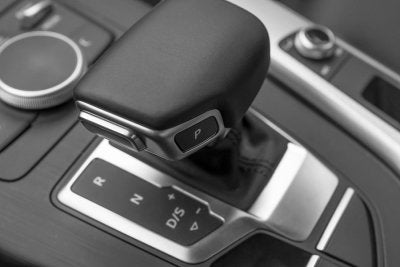
Slipping Clutch
Many of the most common manual transmission problems originate in the clutch. If you have started to notice that your manual transmission has trouble moving between gears, even if you have fully depressed the clutch pedal, you may be dealing with a slipping clutch. A slipping clutch can also cause the engine to rev as you are attempting to shift between gears. In order to repair a slipping clutch, a full clutch replacement may be necessary.
Sticking Gear Shift
When a manual transmission is functioning properly, its gear shifter should slide effortlessly between gears. If you have started to notice that you really have to yank or push the shifter in order to shift to the appropriate gear, this could indicate that one of the internal components in your clutch has worn out. Problems in the gears themselves can also result in a very sticky gear shift. Once you have had your gears repaired, your stick shift will be returned to normal functioning.
Fluid Leaks
Manual transmissions need regular fluid changes in order to remain in peak operating condition. A transmission fluid leak could cause your transmission parts to wear down quickly and create grinding noises or burning smells. It is possible to diagnose a transmission fluid leak by looking for pools of red fluid in your car’s parking spot. You can also use your transmission’s dipstick to inspect the current level of your transmission fluid. Typically, you will need to change your manual transmission fluid every 45,000 miles.
-
Automatic Transmission Vehicles: What Not to Do
By learning about the different parts of your automatic transmission, you can avoid some common transmission problems. In this video from Engineering Explained, you will receive some advice on what not to do when you are driving an automatic transmission vehicle. For example, when you are driving down a hill, you should avoid shifting your car into neutral. A transmission shop in Silver Spring can provide you with more essential transmission care tips.
If you have started to notice a transmission problem in your vehicle, do not hesitate to make an appointment at your transmission repair shop . A team of transmission rebuild specialists can help you make sure that your transmission is running smoothly, and they can also help you avoid accidentally damaging your transmission while you drive.
